Special Report
9 States Drinking the Most Beer

Published:
Last Updated:

Beer has been a popular drink choice in the United States since before the American Revolution. Even during Prohibition, many major breweries found ways to stay open, and some states refused to adopt any enforcement code, effectively allowing residents to continue consuming beer. As recently as last year, the typical American adult drank 27 gallons of beer — equivalent to about 288 bottles.
Beer consumption is not uniform across all states, and people living in certain parts of the country are far more likely to drink beer than others. Factors such as state tax codes and geography all appear to influence Americans’ drinking habits. Per capita beer consumption also correlates with a number of health outcomes and behaviors.
24/7 Wall St. reviewed wholesale beer shipping volume in each state, adjusted to the drinking age population, to identify the states where beer consumption per capita is highest. Annual beer consumption per adult in the top nine states ranges from 33.4 gallons, or 356 bottles, to 41.7 gallons, or about 445 bottles. Per capita consumption data was provided by the Beer Institute, a Washington D.C. based industry advocacy group.
Click here to see the states drinking the most beer.
Click here to see our detailed findings and methodology.
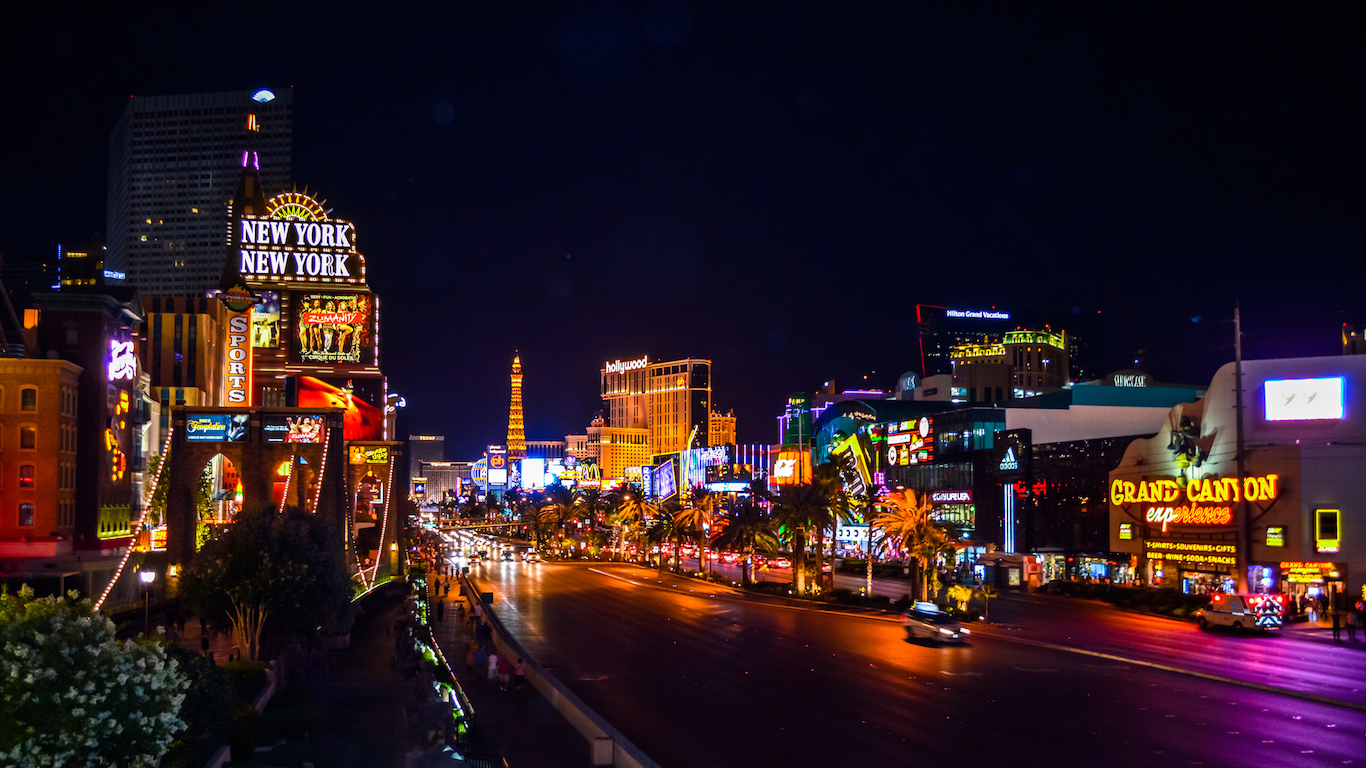
9. Nevada
> Annual per capita consumption: 33.4 gallons of beer
> 5 yr. consumption change: -7.7%
> Driving deaths involving alcohol: 32.8% (21st highest)
> Beer tax rate: $0.16 per gallon (16th lowest)
Drinking-age adults in Nevada consumed 33.4 gallons of beer on average in 2016, well above the 27 gallon average consumption nationwide. As is the case in most states that consume the most beer, Nevada does not levy an especially high beer excise tax. For each gallon of beer sold, the state collects 16 cents, less than half the 35 cent per gallon average tax across all states.
Tourists likely accounted for a large share of beer sales in Nevada in 2016. An estimated 42.9 million people visited Las Vegas in 2016, a record number for Sin City.
[in-text-ad]
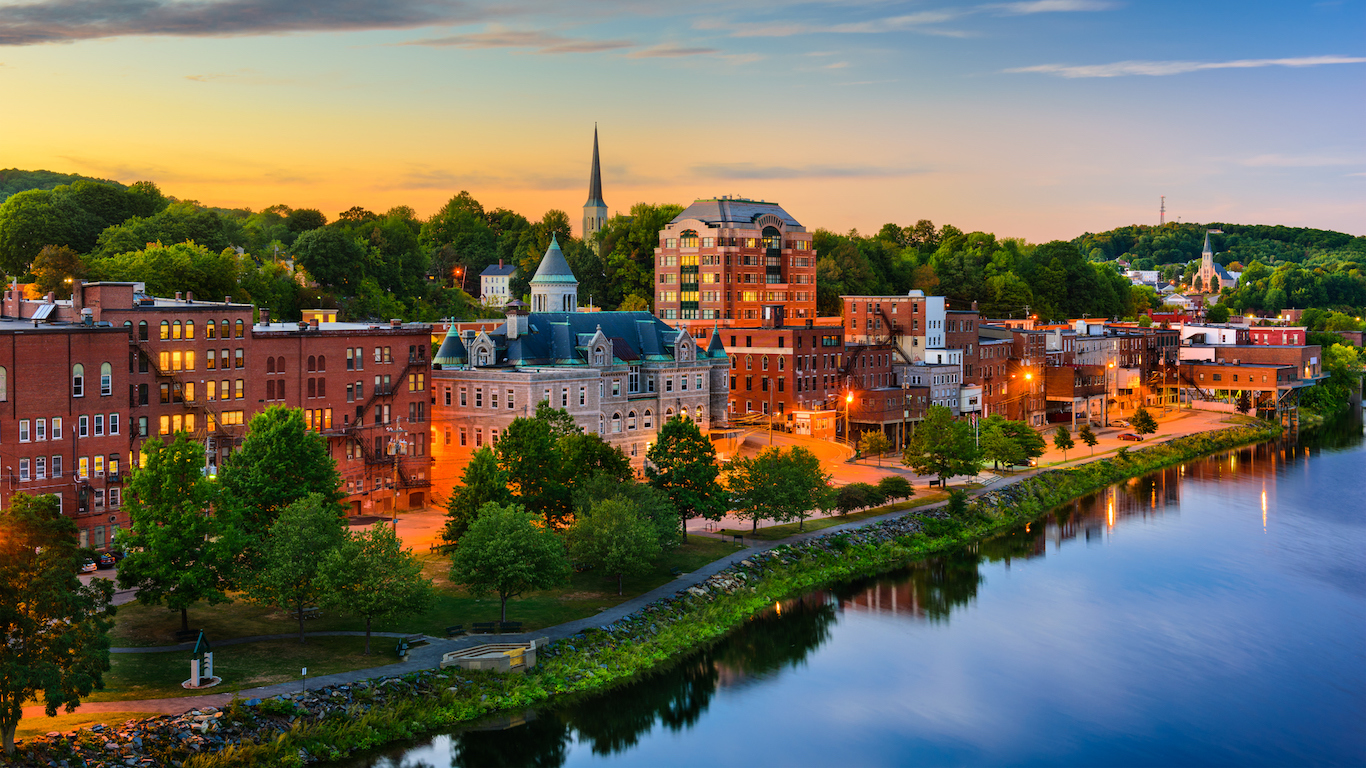
8. Maine
> Annual per capita consumption: 33.7 gallons of beer
> 5 yr. consumption change: -4.0%
> Driving deaths involving alcohol: 39.8% (4th highest)
> Beer tax rate: $0.35 per gallon (18th highest)
In only seven states beer sales per capita surpassed the 33.7 gallons sold per adult in Maine in 2016. States with larger rural populations tend to consume more beer than more urban states, and Maine is no exception. Some 61.3% of Maine’s population lives in rural areas, the largest share of any state.
As is the case in many states with high beer consumption, the share of alcohol-related traffic fatalities in Maine is relatively high. About 40% of driving deaths in the state involves alcohol.
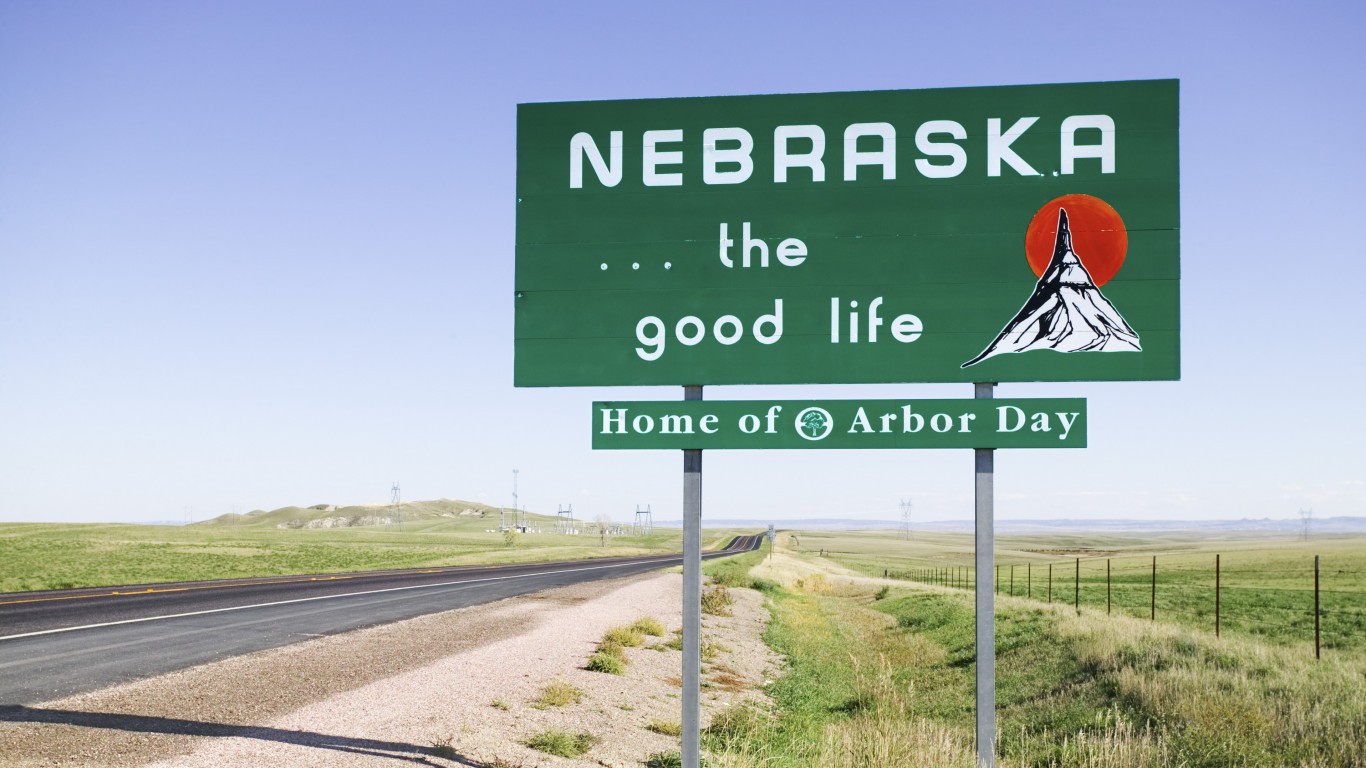
7. Nebraska
> Annual per capita consumption: 34.1 gallons of beer
> 5 yr. consumption change: -1.1%
> Driving deaths involving alcohol: 35.6% (9th highest)
> Beer tax rate: $0.31 per gallon (20th highest)
While Nebraska might not have the myriad of breweries its Midwestern neighbors like Wisconsin and Michigan do, the state does share the Midwest thirst for beer. Each year, adult Nebraskans consume 34.1 gallons of beer on average, seventh most of any state. Consumption is down slightly from 34.4 gallons in 2011.
The state’s love of beer may have some unfortunate consequences, as over 35% of all driving fatalities in the state involve alcohol, higher than the comparable national rate of 30% and the fourth highest share of all states.
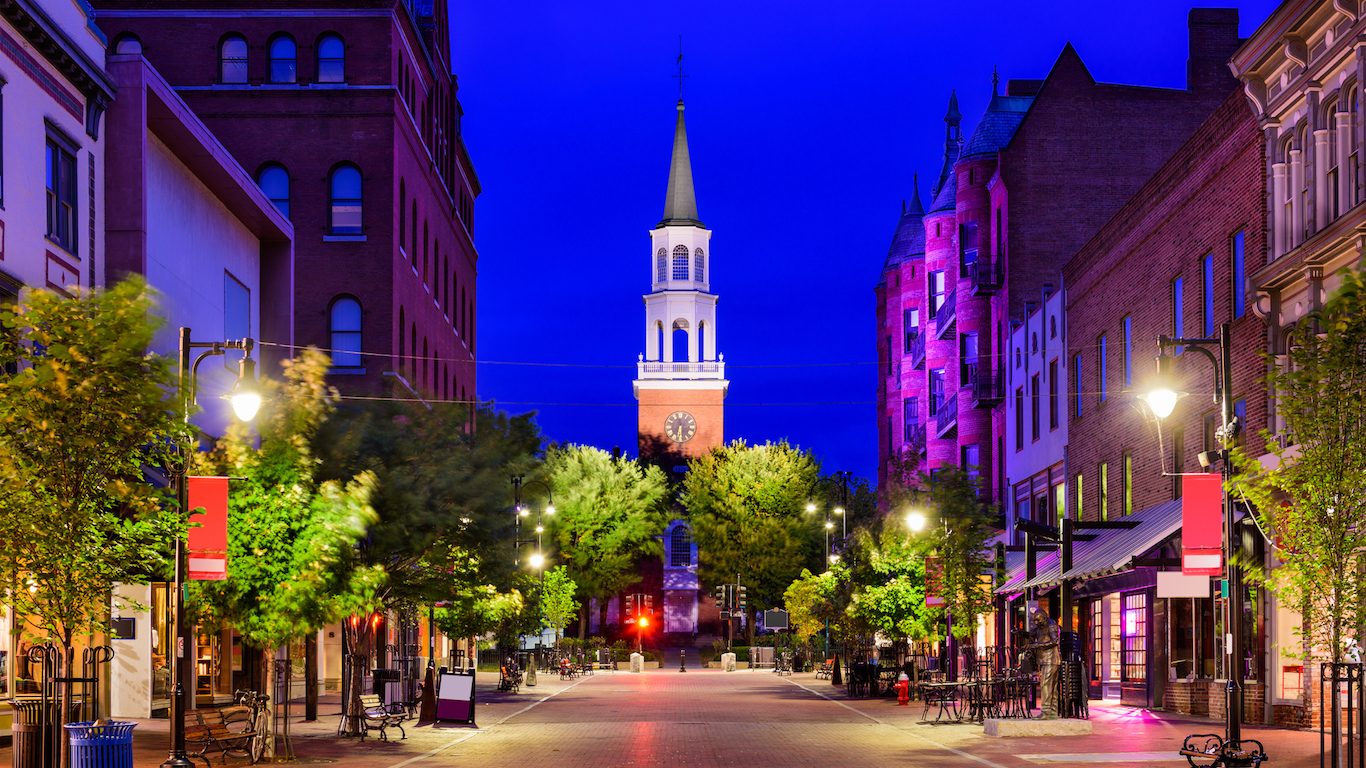
6. Vermont
> Annual per capita consumption: 34.3 gallons of beer
> 5 yr. consumption change: -1.1%
> Driving deaths involving alcohol: 33.4% (17th highest)
> Beer tax rate: $0.27 per gallon (22nd highest)
Adults in Vermont drank an average of 34.3 gallons of beer in 2016, well above the 27 gallon U.S. average. The Centers for Disease Control and Prevention classifies excessive drinking as five or more drinks on one occasion for men and four or more for women or 15 or more drinks a week for men and eight or more for women. In Vermont, 19.6% of adults drink excessively, a larger share than in most states. Still, while excessive drinking is never healthy, only 11.4% of adults in Vermont report being in fair or poor health, the smallest share of any state.
[in-text-ad]

5. Wisconsin
> Annual per capita consumption: 35.5 gallons of beer
> 5 yr. consumption change: -2.0%
> Driving deaths involving alcohol: 36.9% (8th highest)
> Beer tax rate: $0.06 per gallon (3rd lowest)
With the abundance of breweries in the state, beer is an important part of Wisconsin’s identity and culture. Some of the largest and oldest breweries in the country, today legendary brands, began their operation in the state. Pabst — known for Pabst Blue Ribbon — Leinenkugel, Schlitz, Miller, and many more got their start in the state, mostly in Milwaukee. The state’s history of famous breweries likely has had an impact on consumption, which is among the highest in the country. Wisconsin adult residents drink an average of 35.5 gallons each year. Low beer excise taxes of just 6 cents per gallon — the third lowest excise tax of any state and far below the average state tax of 35 cents — likely do not hurt sales either.
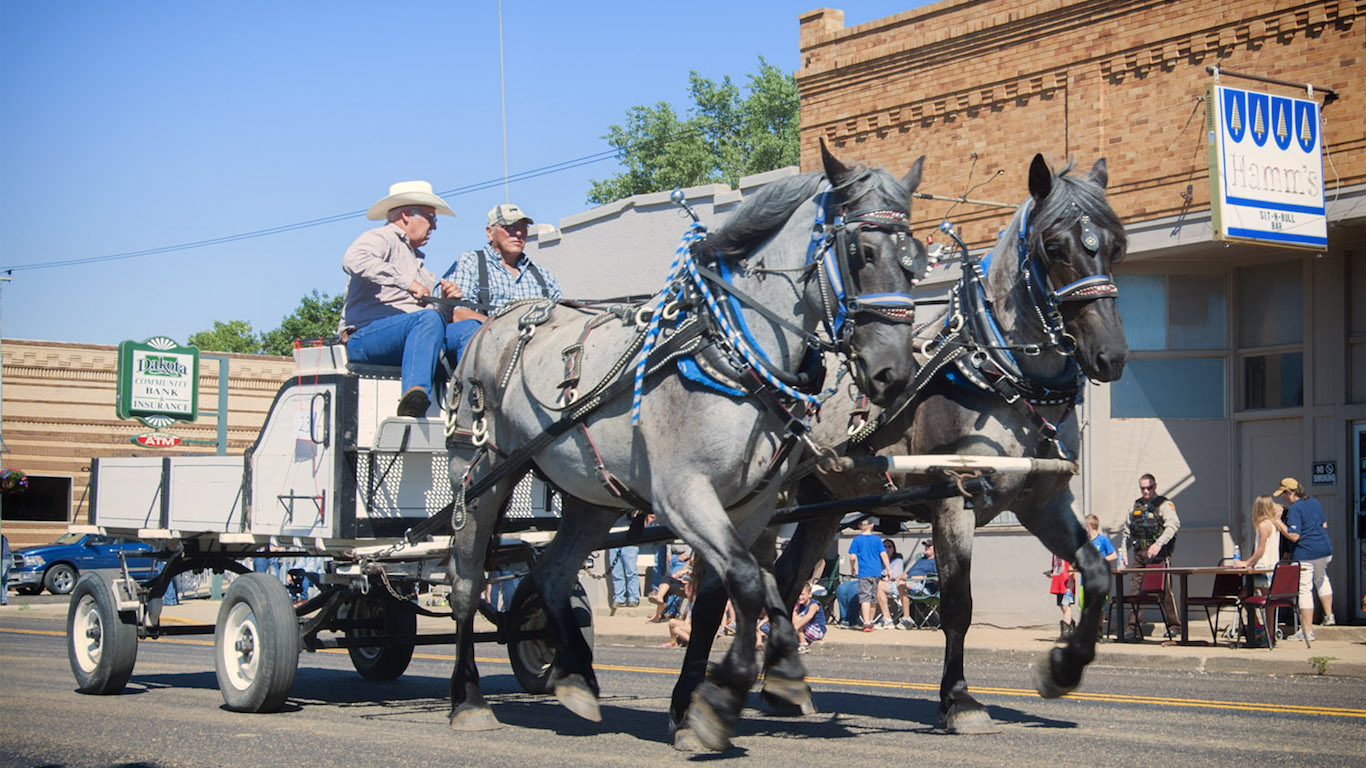
4. North Dakota
> Annual per capita consumption: 38.6 gallons of beer
> 5 yr. consumption change: -8.0%
> Driving deaths involving alcohol: 46.7% (the highest)
> Beer tax rate: $0.39 per gallon (17th highest)
North Dakotan adults drink an average of 38.6 gallons of beer in a year, about 12 gallons more than the amount the average American adult drinks. Just a few years ago, in 2012, the state led the nation with an average beer consumption per adult of about 46 gallons, the equivalent of 488 12-ounce cans of beer.
State residents in general tend to abuse alcohol, including beer. About one-quarter of adults report drinking excessively, the highest share in the country and significantly higher than the 18% nationwide figure. The excessive drinking likely has some short- and long-term health effects, one of the most tangible of which is driving fatalities. Nearly 47% of driving deaths in the state involve alcohol, the highest proportion of any state.
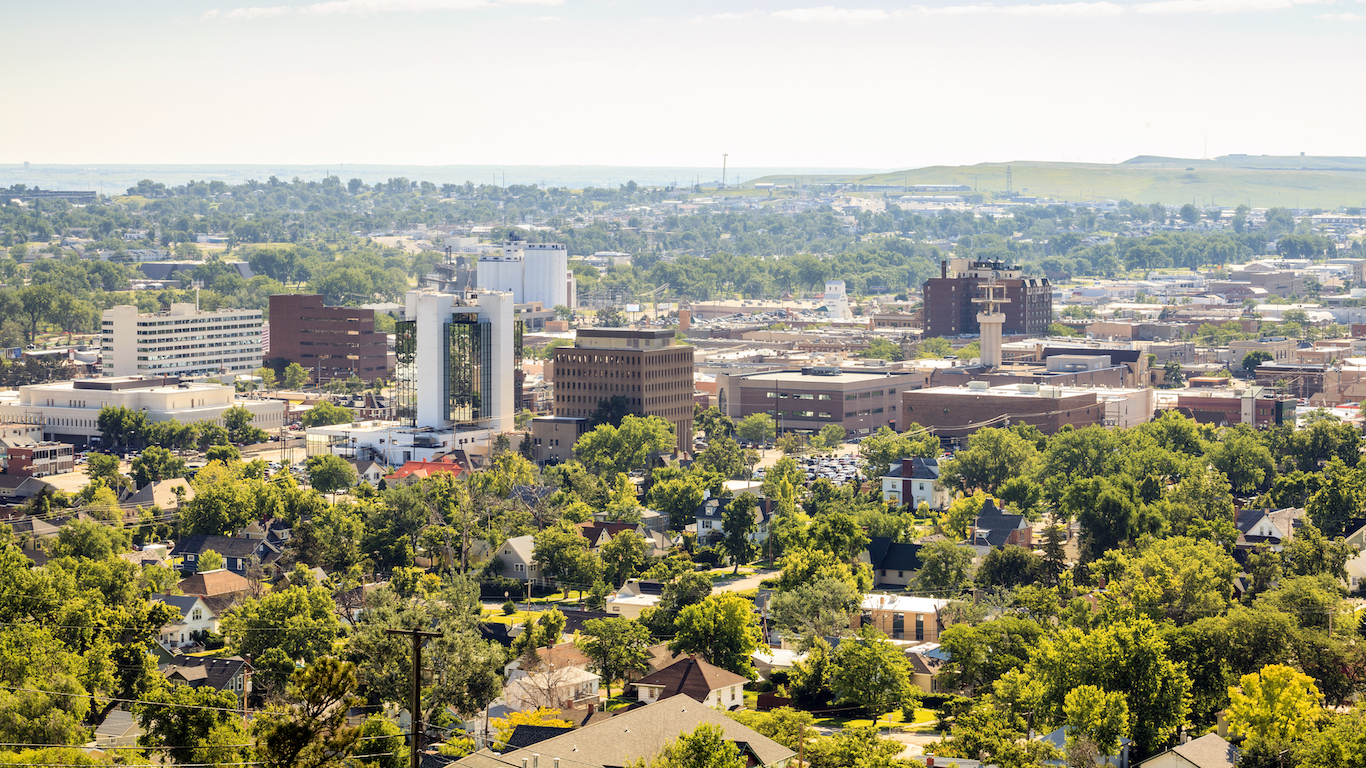
3. South Dakota
> Annual per capita consumption: 38.6 gallons of beer
> 5 yr. consumption change: 2.2%
> Driving deaths involving alcohol: 35.2% (11th highest)
> Beer tax rate: $0.27 per gallon (22nd highest)
Adults in South Dakota drink about as much beer as their neighbors to the north, an average of 38.6 gallons a year. Beer consumption per capita in both states ties for third highest. Consumption in South Dakota increased by nearly a gallon since 2011, when state adults drank 37.8 gallons on average. In North Dakota, meanwhile, consumption fell by about 3.5 gallons over the same period.
Primarily rural states tend to have much higher beer consumption per capita, and in South Dakota, about 43% of the population lives in rural areas, more than double the nationwide share.
[in-text-ad]
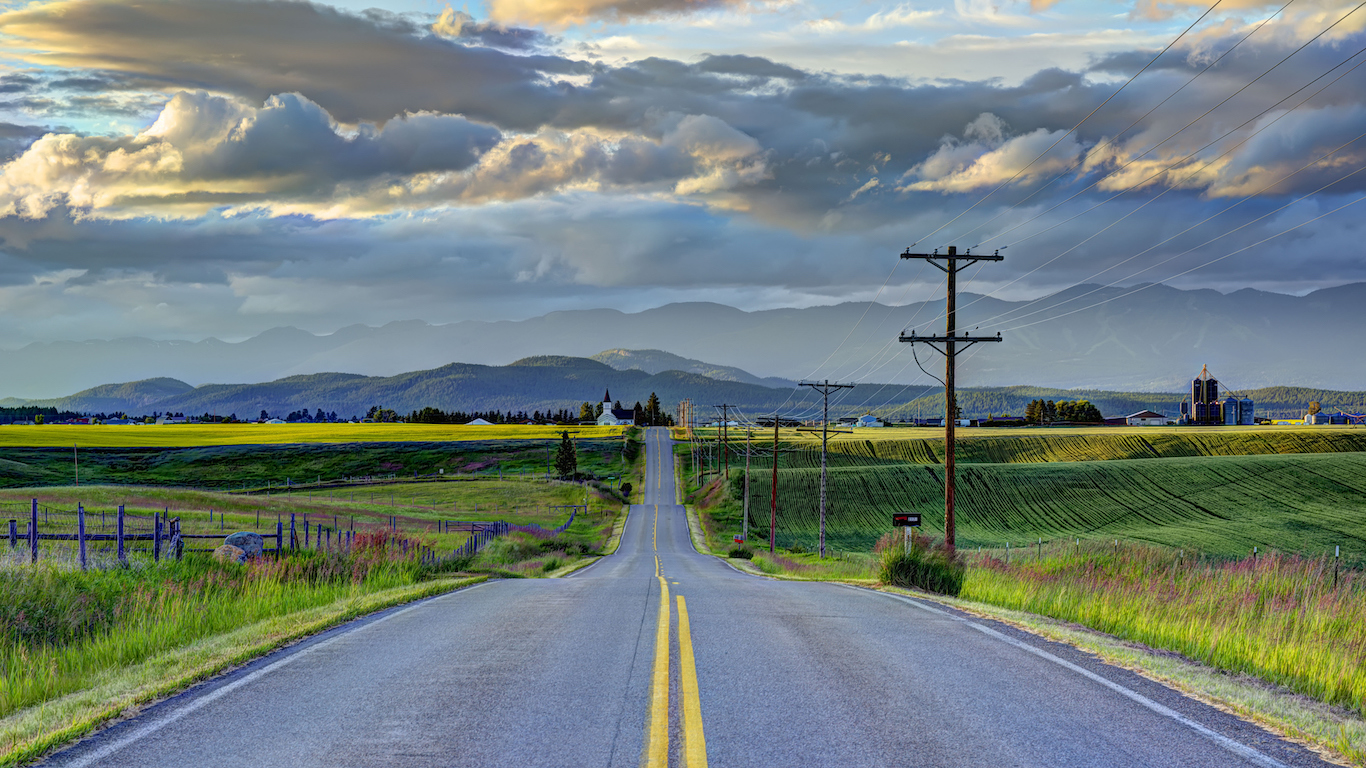
2. Montana
> Annual per capita consumption: 39.1 gallons of beer
> 5 yr. consumption change: -3.3%
> Driving deaths involving alcohol: 46.3% (2nd highest)
> Beer tax rate: $0.14 per gallon (12th lowest)
While many factors may lead residents of certain states to drink more than residents of other states, the relative affordability of beer likely is a significant factor. Excise taxes on beer in each of the states where beer consumption is highest are well below the 35 cent average across all states. In Montana, taxes amount to just 14 cents per gallon of beer.
As is the case with many of the states on this list, Montana’s love affair with beer may have some fatal consequences. Alcohol was involved in over 46% of all driving deaths in the state, the second highest rate of any state and well above the 30% share nationwide.
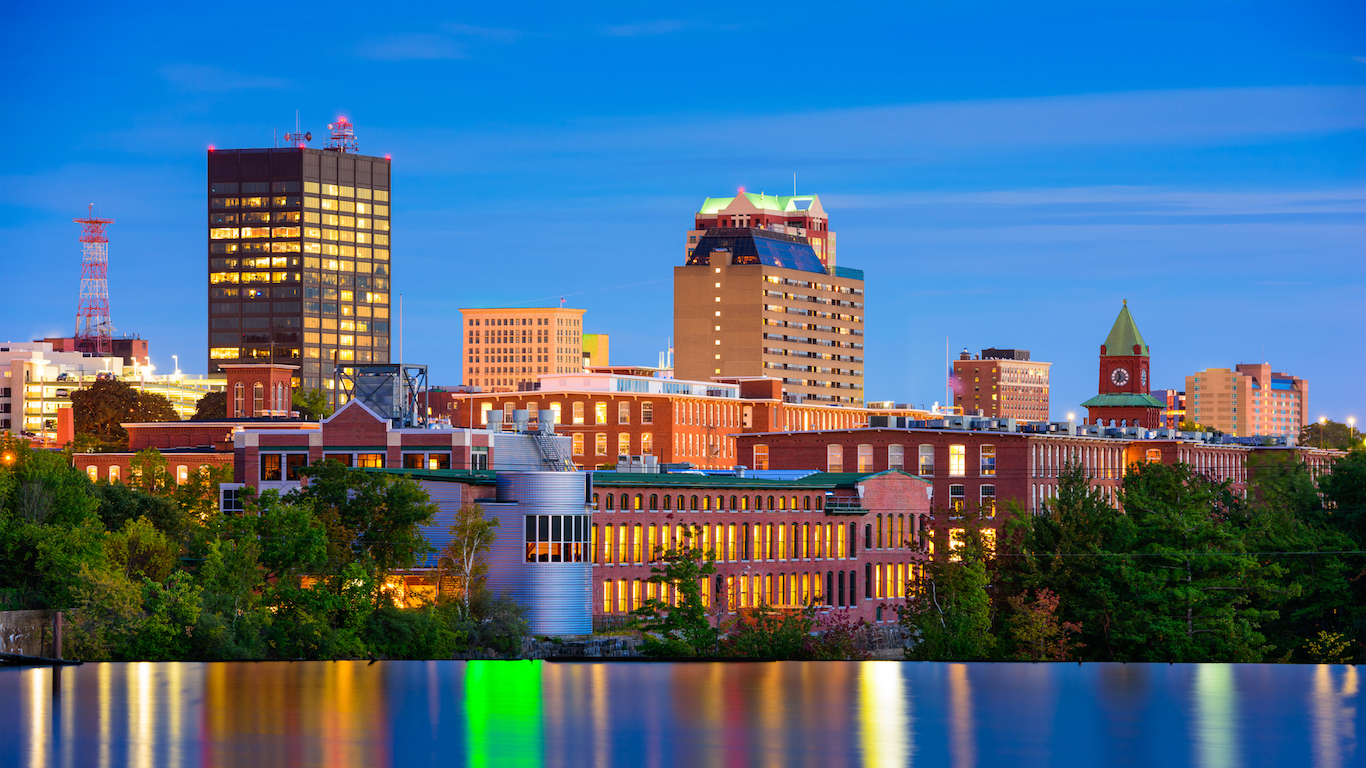
1. New Hampshire
> Annual per capita consumption: 41.7 gallons of beer
> 5 yr. consumption change: -2.9%
> Driving deaths involving alcohol: 31.2% (22nd lowest)
> Beer tax rate: $0.30 per gallon (21st highest)
Beer consumption measures the amount of beer sold to wholesalers in the state, meaning that consumption figures include beer bought by residents who are out of state. New Hampshire, which has no sales tax, is a popular destination for purchasing alcohol, including beer. Therefore, the state’s No. 1 rank on this list may be propped up by outsiders. This is supported by the fact that just 18.4% of state adults report drinking to excess, which is just slightly above the national rate, and well below the excessive drinking rates in most states on this list. Excessive drinking rates of other states on this list are closer to 25%.
Detailed Findings and Methodology:
Across the country, per capita beer consumption is down 4.5% from five years ago. South Dakota is the only state on this list where beer consumption increased since 2011. The typical adult in South Dakota drank 38.6 gallons of beer in 2016, the third most of any state and up from 37.8 gallons in 2011.
Beer consumption is more common in states with large rural populations. Eight of the nine states with the highest beer consumption per capita are more rural — a larger share of residents live in rural areas than the 19.3% U.S. average. Maine and Vermont, the two most rural states in the country, rank eighth and sixth on this list, respectively.
One of the biggest determinants of consumption is taxes. The federal government levies a 58 cent per gallon beer tax — on top of which, each state levies its own tax. Through both state and federal taxes, beer consumption accounts for some $63 billion in tax revenue annually.
Across all states, the average beer excise tax is 35 cents a gallon. Of the nine states on this list, seven levy a lower tax per gallon than the average among all states. New Hampshire, the state with the highest per capita beer consumption rate, taxes beer at only 30 cents a gallon and is one of only a handful states without a sales tax. Partially as a result, residents of neighboring Vermont, Massachusetts, and Maine — all states that levy sales taxes — likely account for some of the beer sales in New Hampshire.
Higher beer consumption may be taking a toll on residents’ health. The Centers for Disease Control and Prevention classifies excessive drinking as five or more drinks on one occasion for men and four or more for women or 15 or more drinks a week for men and eight or more for women. Excessive drinking is never healthy and is linked to poor mental health and an increased risk of certain cancers. While high per capita beer consumption does not necessarily mean adults are drinking to excess, seven of the nine states on this list have a higher excessive drinking rate than the 18% nationwide rate.
One of the most immediate risks associated with excessive drinking is fatal motor vehicle accidents. Nationwide, 30% of all driving deaths involve alcohol. In each of the nine states consuming the most beer, the alcohol-related driving death rate is higher than the national rate. In North Dakota, the state with the fourth highest beer consumption rate, 46.7% of driving deaths are alcohol related, the largest share of any state.
To identify the states drinking the most beer, 24/7 Wall St. reviewed beer shipments in each state per resident 21 years and older in 2016 with data provided by Beer Institute and the U.S. Census Bureau. We also reviewed data from the Centers for Disease Control and Prevention on excessive drinking rates and alcohol-related death figures. Beer excise tax rates as well as sales tax rates came from the Tax Foundation, an independent tax policy research organization. The share of the population living in rural localities came from the U.S. Census Bureau, and alcohol impaired driving deaths came from the National Highway Transportation Safety Administration’s Fatality Analysis Reporting System.
Finding a qualified financial advisor doesn’t have to be hard. SmartAsset’s free tool matches you with up to 3 fiduciary financial advisors in your area in 5 minutes. Each advisor has been vetted by SmartAsset and is held to a fiduciary standard to act in your best interests. If you’re ready to be matched with local advisors that can help you achieve your financial goals, get started now.
Thank you for reading! Have some feedback for us?
Contact the 24/7 Wall St. editorial team.